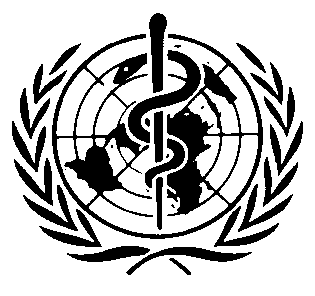International Chemical Safety Cards
| HYDROGEN BROMIDE | ICSC: 0282 |




HBr Molecular mass: 80.9 (cylinder) 
 ICSC # 0282
ICSC # 0282CAS # 10035-10-6 RTECS # MW3850000 UN # 1048 (anhydrous) EC # 035-002-00-0 March 15, 2001 Peer reviewed |
| TYPES OF HAZARD/ EXPOSURE | ACUTE HAZARDS/ SYMPTOMS | PREVENTION |
FIRST AID/ FIRE FIGHTING |
| FIRE |
Not combustible.
Heating will cause rise in pressure with risk of bursting.
|
|
In case of fire in the surroundings: all extinguishing agents allowed.
|
| EXPLOSION |
Risk of fire and explosion on contact with metals as a result of hydrogen formation.
|
|
In case of fire: cool cylinder by spraying with water but avoid contact of the substance with water.
|
| EXPOSURE |
|
AVOID ALL CONTACT!
|
IN ALL CASES CONSULT A DOCTOR!
|
| •INHALATION |
Burning sensation.
Cough.
Sore throat.
Laboured breathing.
Shortness of breath.
Symptoms may be delayed (see Notes).
|
Ventilation, local exhaust, or breathing protection.
|
Fresh air, rest.
Half-upright position.
Refer for medical attention.
|
| •SKIN |
ON CONTACT WITH LIQUID: FROSTBITE.
Redness.
Pain.
Blisters.
|
Cold-insulating gloves.
Protective clothing.
|
ON FROSTBITE: rinse with plenty of water, do NOT remove clothes.
Refer for medical attention.
|
| •EYES |
Redness.
Pain.
Severe deep burns.
|
Eye protection in combination with breathing protection.
|
First rinse with plenty of water for several minutes (remove contact lenses if easily possible), then take to a doctor.
|
| •INGESTION |
|
Do not eat, drink, or smoke during work.
|
|
| SPILLAGE DISPOSAL | STORAGE | PACKAGING & LABELLING | ||
|
Evacuate danger area!
Consult an expert!
Ventilation.
NEVER direct water jet on liquid.
Remove gas with fine water spray.
Gas-tight chemical protection suit including self-contained breathing apparatus.
|
Separated from
incompatible materials
.
See Chemical Dangers.
Cool.
Dry.
Ventilation along the floor.
|
C symbol R: 35-37 S: 1/2-7/9-26-45 UN Hazard Class: 2.3 UN Subsidiary Risks: 8 |
||
| SEE IMPORTANT INFORMATION ON BACK | ||||
|
||||